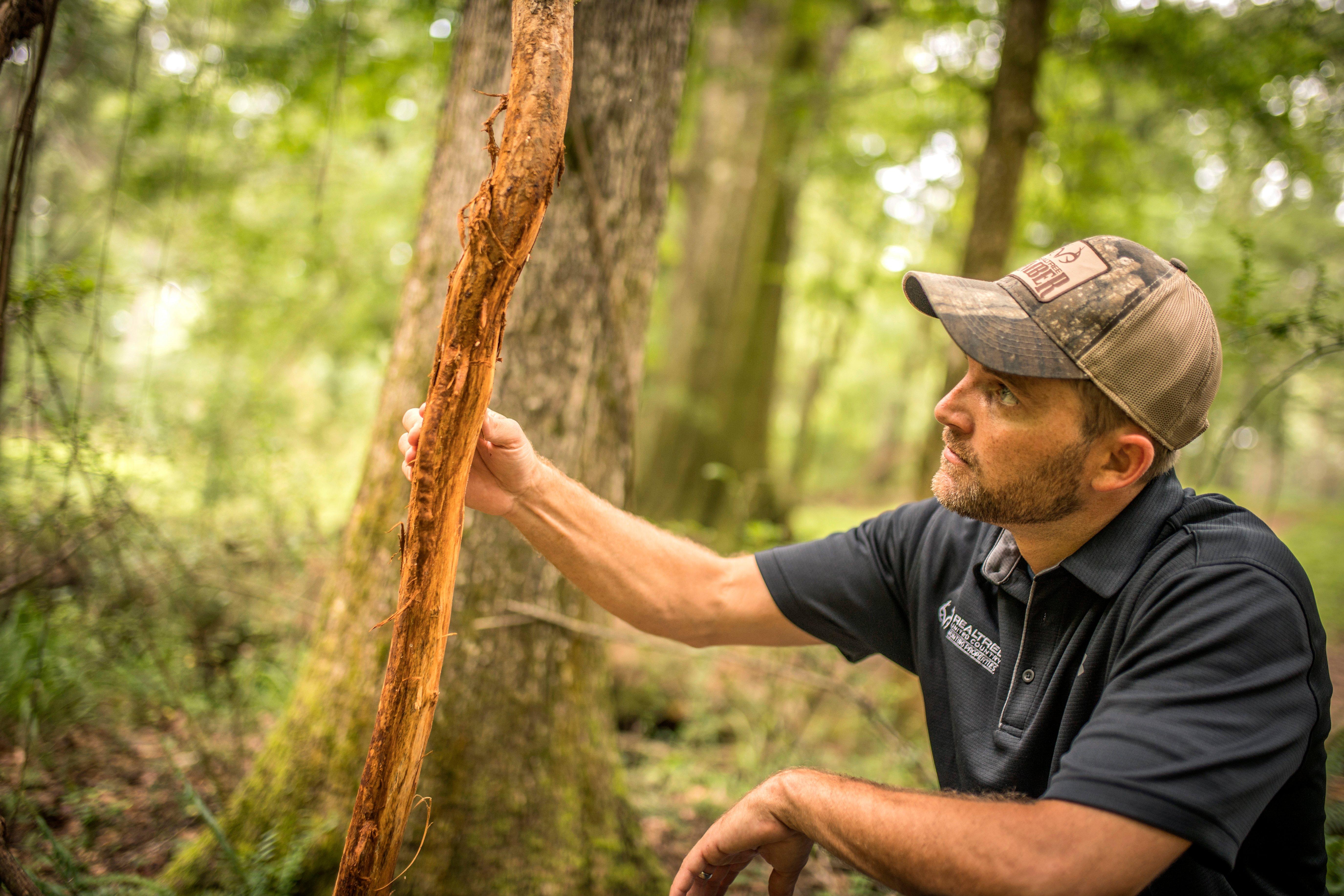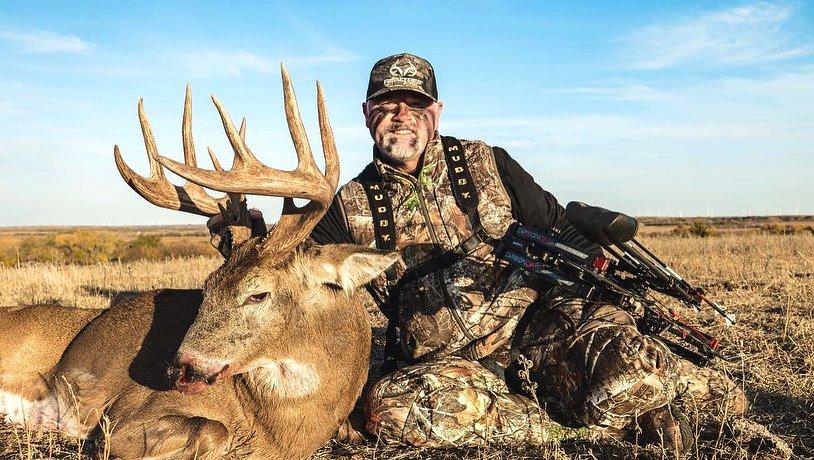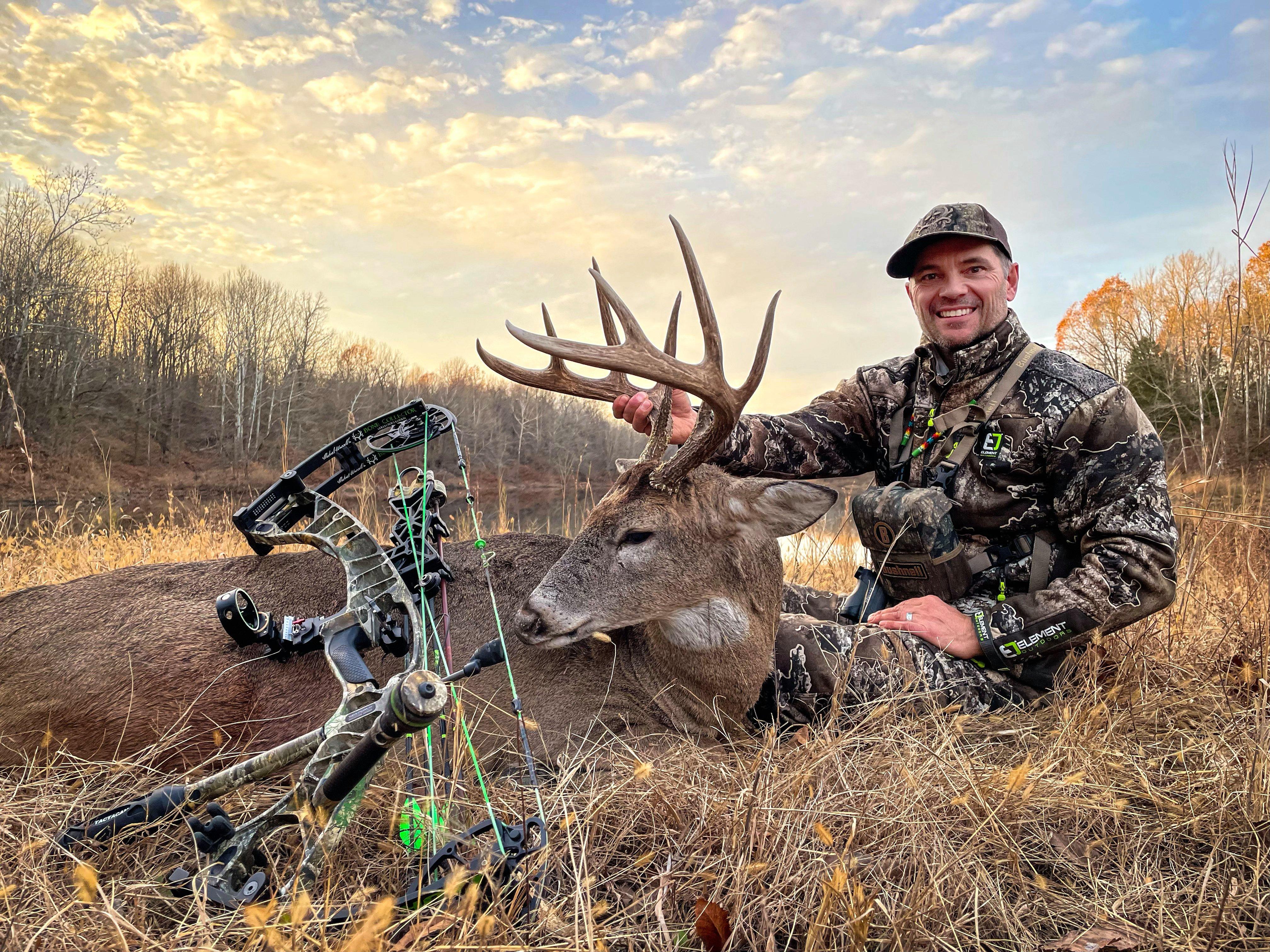Take a break from screen scouting in favor of old-school woodsmanship

Reading deer sign is an important part of deer hunting. Image courtesy of Bill Konway
Is it possible that hunters are losing their edge? I would argue it’s unequivocable. As technology continues to improve, humans have become more dependent on a screen answering their most difficult questions and less reliant on good, old-fashioned analog thinking. While hunters may fancy themselves to be more in tune with nature than the average city slicker, it would be naïve to assume that we’re immune to the same screen-dependent epidemic that has rolled over the rest of society.
Trail cameras aren’t exactly new to the scene. In fact, Dean Reidt first manufactured and marketed the “OG” trail camera in the mid to late ’80’s. Nowadays, dozens of companies sell cams in all shapes, sizes, and technologies. Some can even talk to outer space!
While technology certainly deserves a seat at the table, hunters shouldn’t abandon tried-and-true techniques that have put meat over fires since the fracturing of Pangea. Reading deer sign is the simplest way to put a finger on the pulse of any hunting spot. While this age-old skill may have slipped in importance among modern day hunters, there’s plenty to learn from each broken branch and track in the mud. The three hunters below possess enough knowledge to rival any of the ancient spear-carriers. Each one logs years of experience and shares tips to help all of us fill our own fires this upcoming season.

Few hunters know whitetails as well as Jeff Danker. Image courtesy of BuckVentures.
JEFF DANKER ON SCRAPES
BuckVentures host Jeff Danker has had as much success hunting giant bucks as anyone else in America, and he says there’s no substitute for boots on the ground. “A trail camera is the best and worst tool we’ve developed over the last 20 years,” he says. “It can be so helpful, but most of the time people can’t help themselves and just have to go check that memory card and bump deer in the process.
“In truth, as great as trail cameras are, walking around and observing nature and watching deer move is much more impactful, but you have to be careful. I’m a big buck guy, and I’ve learned big bucks are big for a reason. If you’re going to be a big buck guy, you have to have fewer entries and exits and less movement so you don’t disturb them.
“Finding a scrape line is golden for learning a deer’s movement without invading his personal space,” says Danker. “Once I find a well-used scrape line, the first thing I’m going to do is figure out where is the closest pocket of nasty stuff where those bucks are coming from. Then I’ll try to figure out how to get in and out of that spot undetected. Once I find out both of those things, I’ll look at the trees to see where I can hang a stand along the scrape line in a place I can enter and exit undetected. You may want to hang multiple stands for multiple winds.”
Danker also gives advice for when it doesn’t work out according to plan. “If there isn’t a good stand-hanging tree close to the scrapes you found, hang your stand in the closest suitable tree. Then make a couple of mock scrapes close to your stand. That will challenge the natural scrape line that’s already there, and you’ll be more likely to have a successful mock scrape. In future years, bucks will actually start using those scrapes you made, and you ‘ll have a natural scrape line exactly where you want it.”
Don’t Miss: IS THERE A WHITETAIL FOOD PLOT SILVER BULLET?

As a longtime deer hunter and hunting guide, Nick Mundt reads sign with the best of hunters. Image courtesy of Bone Collector
NICK MUNDT ON DEER TRAILS
Bone Collector co-host Nick Mundt has honed his hunting craft over 30+ years in the woods. Doubling as an outfitter and guide, he has learned a thing or two about reading sign and converting that skill into filled tags.
“Trails are key to my success,” says Mundt. “I always try to find a spot where two or three trails intersect so you can have multiple trails funneling deer from different areas. I especially like when those trails are going from a bedding area to a known doe area, like a field or a food plot. If I can find a scrape on a field edge with a trail coming to it, that’s money in the bank. In most cases, deer will use that trail to check the scrape, and it can be a deadly strategy to land the dominant buck in that area.”
Mundt also likes deer highways that lead to big buck playgrounds. “If you can find a thick rub line with a trail going in and out, you know it’s a buck trail. That helps you focus your time and effort to areas where you know bucks are frequenting. A lot of times you can see scarred trees from previous years. Bucks will use the same areas year after year. A lot of times, those spots are good spots for detecting the wind, and they will allow bucks to stay in cover but still see into the open if there are hot does or danger coming. In either case, those bucks will leave that cover and usually travel along a known trail to do it.
“Sometimes I just stumble into areas with a lot of rubs, but the perfect time to scout an area is when you’re shed hunting in late winter or early spring. In most cases, you’ll either find sheds in the fields where they’re feeding or in their beds. Sheds also commonly turn up on trails between the two. Since deer use the same areas year after year, wherever he sheds, that’s probably where he’s living during the late season every year. If you can find a food source close by with a trail going between the two, you can set a stand to ambush him as he’s moving between the two.”
Don’t Miss: HOW FAR DID THAT BUCK TRAVEL?

Michael Waddell juices up a scrape. Image courtesy of Bone Collector
MICHAEL WADDELL ON STAGING AREAS AND FOOD SOURCES
Michael Waddell might be the most qualified deer hunter in America. Bone Collector’s founder and front man has spent the last 30 years tracking big racks in the public eye. “The most important thing to know is where big bucks are hanging out,” Waddell says. “Finding well-used trails should be your first step. I really like to look for those in the spring when I’m hunting turkeys, but I’m not afraid to scout those thicker areas into late summer. If you are just walking and aren’t hunting, you shouldn’t have a problem bumping deer, especially if it’s a time of the day when they aren’t moving. If you do bump them that time of year, they’ll come back. Deer know when they’re being pursued and can tell the difference in a chance encounter and being hunted during the witching hour.
“Once you find the deer highways, you have to find out what they’re eating, especially early in the year. It’s good to hunt a food source or a trail leading to a food source because the deer will usually be there before dark, and the bucks have to consume calories to prepare for the rut. Before the acorns drop, there won’t be a ton of options for them to eat. They will most likely be in a bean field or feeding on honeysuckle or fruit trees. If you can find an early-dropping persimmon tree, you’ve found a gold mine.
“In many cases the bucks will use the staging areas where thickets transition to openings. Bucks will come out of their beds and hang there and look around, scanning the fields for danger or other deer. They’ll use the trails from their beds to get in and out. Set a stand right there if the food source is too big to hunt. Otherwise, if your food plot is small enough to cover, you can meet him on the edge of the field.”
Reading sign might not be a lost art, but there’s little doubt that most hunters could spend more days on the hoof and fewer on their phones. The next time you’re serious about landing a brag-worthy buck, instead of Googling where the big bucks live, try taking a walk around your hunting spot to find out for yourself.
Don’t Miss: 81 WAYS TO FAIL AT DEER HUNTING










